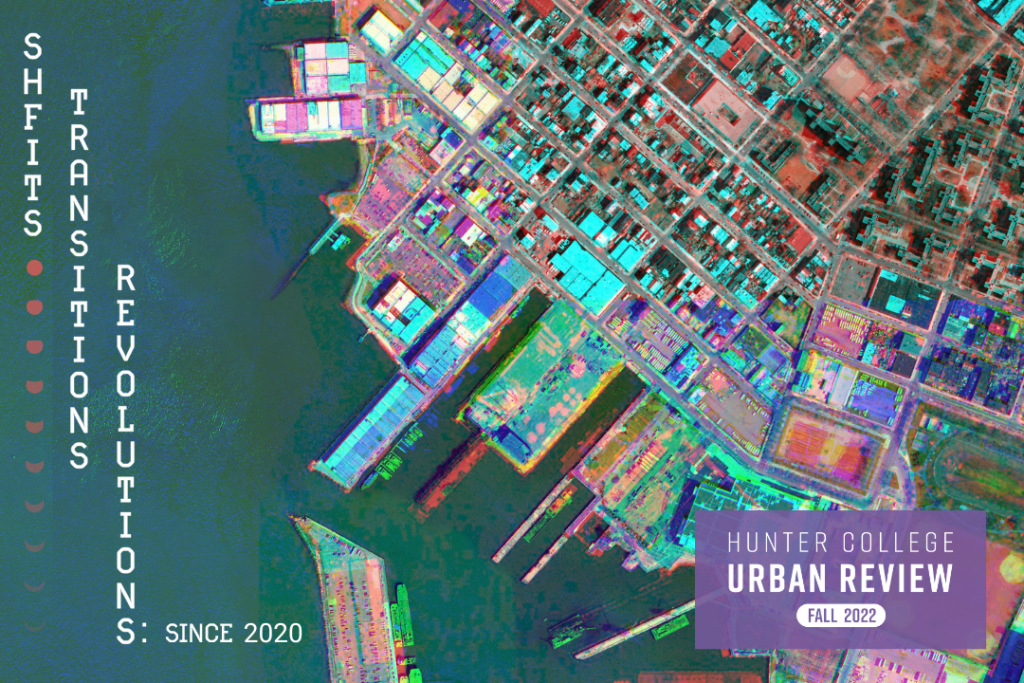
Cities change as the world around them changes. They reflect and adapt to local and extralocal events causing national and international economic shifts, political transitions, and social revolutions. Since 2020, the spaces we live in and how we live in them have changed dramatically. Where we live, how we commute, what we buy, how we relate to each other—it is all different now, in large and small ways. Many changes are fresh and inventive; some are rooted in precedent, for better or worse. Some are working, some are not; and for some, we may never know.
The Fall 2022 issue of the Urban Review entitled “Shifts, Transitions, and Revolutions Since 2020” takes a look back at how our cities have changed and how we relate to them since that fateful year when so many aspects of our everyday lives had to be reconsidered. With a bird’s eye view, this issue critiques housing policy, urban design, shifting employment trends, and the science of human interaction to assess the progress we have made since 2020, and where our cities are headed. We assess the precedents relied on, whether the precedents are reliable, and whether we can do better. Some shifts have become transitions, and some transitions have become revolutions.
To be expected, many contributors reflect on Covid as 2020’s main catalyst of change in urban planning and policy. Schayne Fox links the reshaping of Lower Manhattan after 9/11 to the post-Covid imperative for more housing, and how Midtown Manhattan’s underused office neighborhoods could become more residential. Jade C. Williams also focuses on the housing shortage but for aging New Yorkers in particular, whose vulnerability was made even more apparent in 2020. Katelin Penner explores a little-known fact that the New York City Police Department, under even greater scrutiny since 2020, owns a considerable amount of land, and how ownership tends to coincide with police overreach in underserved, historically threatened Brooklyn neighborhoods. While open streets and outdoor dining were embraced during Covid to keep restaurants in business as safe third spaces, Lily Shoulberg considers the downside to outdoor dining sheds on local residents and whether their blur of the boundary between public and private space needs to be reconsidered. The lives of food vendors also transformed during Covid, as did their multi-faced, often under-appreciated role in providing not only an essential service but neighborhood identity and cohesiveness at a time when it was needed most. As Jennifer Hendricks explores, we are aware more than ever how food vendors as local entrepreneurs with diverse international identities are a central part of the New York experience and should meaningfully reflect on ensuring their livelihoods. Artem Pankin studies the smart city program in Moscow and the tensions between local and national policy that played out during the pandemic in terms of best practices and priorities for this powerful technology. Emmet Teran considers the post-Covid employment terrain on home health care workers and the history of their battle for better conditions made all the more necessary since 2020.
Our Urban Review contributors and editors took on a challengingly broad topic and delivered a range of diverse discussions that are a testament to the force of change needed to remain progressive, flexible and responsive as urban planners and policymakers.
With considerable pride and gratitude,
Craig M. Notte
Editor-In-Chief

